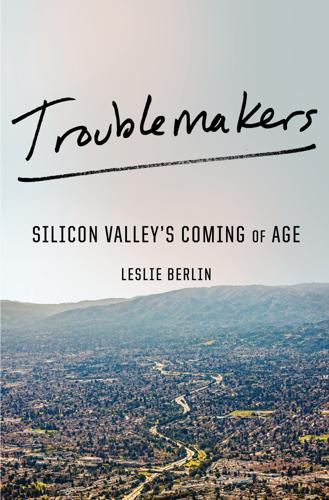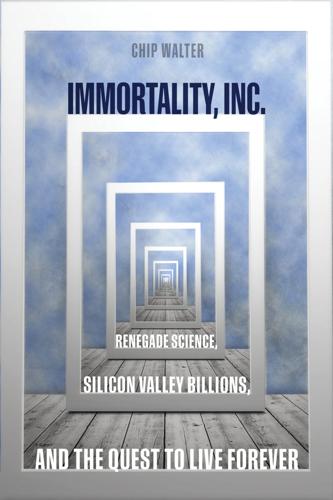Arthur D. Levinson
description: American businessman and former CEO of Genentech, currently chairman of Apple Inc.
4 results

Troublemakers: Silicon Valley's Coming of Age
by
Leslie Berlin
Published 7 Nov 2017
“I had no idea how you would start a company.”34 Boyer was a committed scientist—his Siamese cats were named Watson and Crick35—and his willingness even to consider commercial possibilities for his scientific work made him unusual in 1976. Most biologists at the time were suspicious of the corporate world. Arthur D. Levinson, who would eventually serve as CEO of Genentech and a director of both Apple and Google, recalls that as a young biochemist, if he wanted to speak to a company, he would use a pay phone down the street from his lab, rather than risk being overheard by his colleagues.36 Brook Byers says that a scientist thinking about business “was sort of like when Bob Dylan went electric in the sixties.
…
The man who at twenty-eight had wanted to change the world and had given himself the courage to do so by imagining his eighty-five-year-old self looking back at his life never made it to eighty-five. “One of the ironies here is he devoted so much of his life to applying this technology to generate medical breakthroughs, drugs that saved countless lives,” says Arthur D. Levinson, a former CEO of Genentech and director of Google and Apple, where he also chairs the board. “But unfortunately, his wasn’t one of them.”20 Genentech was the first company to produce a human protein by splicing a gene into bacteria, the first to produce a drug by genetic engineering, and the first biotechnology company to go public.21 It also set a new standard for the pharmaceutical industry when it allowed its scientists to publish papers on their research, rather than keeping it secret.
…
“Missing Computer Software,” BusinessWeek, Sept. 1, 1980, quoted in Martin Campbell-Kelly, From Airline Reservations to Sonic the Hedgehog: A History of the Software Industry (Cambridge, MA.: MIT Press, 2003): 2. 7. Gary Slutsker, “The New ‘Publishers’ in Computer Software,” Venture, September 1980: 79. 8. “Many of us had no idea what it meant to ‘go public.’ ” David V. Goeddel and Arthur D. Levinson, “Obituary: Robert A. Swanson (1947–99),” Nature 403 (Jan. 20, 2000): 264. 9. Burt McMurtry to author, Sept. 20, 2015. 10. Kurtzig, CEO: 187–8; McMurtry to author, Sept. 18, 2015. 11. Kurtzig, CEO: 188. 12. Betty Lehan Harragan, Games Mother Never Taught You: Corporate Gamesmanship for Women (Warner Books, 1978): 299, 310. 13.

Immortality, Inc.
by
Chip Walter
Published 7 Jan 2020
Maybe, I thought, science didn’t have a clue after all, and we were all doomed to spend the final stages of our existence blathering around the assisted living facility checking our name tags to recall who we were, and not a thing to be done about it. Then came news. The announcement on September 18, 2013, of a corporation called Calico, funded largely by Google. “We’re tackling aging,” was the way the company put it, “one of life’s great mysteries.” Google? Now that was worth looking into. And just as intriguing was the news that Arthur D. Levinson had been asked to lead the company. Most people wouldn’t have known Levinson if they tripped over him, but he was a force in Silicon Valley. He was the chairman of Apple, and just a year earlier had chaired Genentech, two of Silicon Valley’s most storied early start-ups. When news of Calico hit the wires, the media snapped to.
…
That meant researchers could, at least theoretically, reorganize them in all sorts of absorbing ways to unlock the mysteries of the human genome—as well as the drugs that might improve their shortcomings. But it was one thing to have an idea, and another to make it a reality. And that was why Levinson was important. Truthfully, Maris hadn’t thought he had a chance in hell of getting to Arthur D. Levinson, chair of Apple Inc., and CEO and chair of Genentech, the world’s first biotechnology company. Blake Byers, a Google Ventures colleague and biomedical engineer, had told Maris that if anyone could build a company that could cure aging, Levinson was the guy. Byers knew this because his father, Brook, was one of the original founders of Kleiner, Perkins, Caufield, and Byers (KPCB), arguably Silicon Valley’s most powerful venture capital firm.

The Cancer Chronicles: Unlocking Medicine's Deepest Mystery
by
George Johnson
Published 26 Aug 2013
Inhibiting angiogenesis can interfere with the healing of surgical incisions and other wounds. Several months after the Orlando meeting, the Food and Drug Administration, weighing the risks and the benefits, revoked approval for Avastin as a treatment for metastatic breast cancer. Such grim realities seemed far away at the grand opening session, where Arthur D. Levinson, a pioneer in the design of targeted therapies, was honored for “leadership and extraordinary achievements in cancer research.” He was cited specifically for his role in developing “blockbuster drugs” like Avastin. Levinson is the chairman of Genentech, which also makes Herceptin to treat the 15 to 20 percent of breast cancers that are HER2 positive—those with an overabundance of the growth-stimulating receptors.

Virtual Competition
by
Ariel Ezrachi
and
Maurice E. Stucke
Published 30 Nov 2016
“FTC Looks at Google-Apple Board Ties: Report,” Reuters (May 5, 2009), http://www.reuters.com/article/us-google-apple-idUSTRE54403Z20090505. The FTC investigated, and both individuals resigned from Apple’s board; https://www.ftc.gov/news-events/press-releases/2009/08/statement-bureau -competition-director-richard-feinstein-regarding; “Statement of FTC Chairman Jon Leibowitz Regarding the Announcement That Arthur D. Levinson Has Resigned from Google’s Board,” FTC Press Release (October 12, 2009), https://www.ftc.gov/news-events/press-releases/2009/10 /statement-ftc-chairman-jon-leibowitz-regarding-announcement. See Section 8 of the Clayton Act, 15 U.S.C. § 19(a)(5). 4. Companies with a complementary relationship may not interact directly.